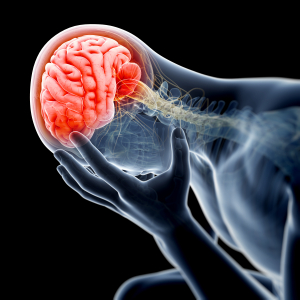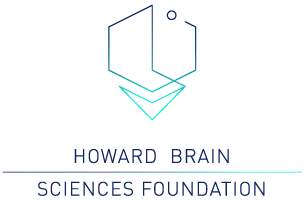As we have previously discussed this month, Traumatic Brain Injuries are complex injuries, driven by interacting mechanisms (Corps, Roth, & McGavern, 2015). Due to the rising rate of TBI diagnosis, it is increasingly important to understand its components and potential methods of treatment (Simon, McGeachy, Bayır, Clark, Loane, & Kochanek, 2017; James,Theadom, Ellenbogen, Bannick, Montjoy-Venning, Lucchesi, Abbasi, Abdulkader, Abraha, Adsuar, Afarideh, Agrawal, Ahmadi, Ahmed, Aichour, Aichour, Aichour, Akinyemi, Akseer ,& Murray, 2019). Neuroinflammation is one such component.
Neuroinflammation is “an inflammatory response within the brain or spinal cord,” which occurs after the initial injury of a TBI (DiSabato, & Godbout, 2016). Specifically, neuroinflammation is triggered by a mixture of internal danger signals and innate immune activation. Triggers for inflammation include damage-associated molecular patterns (DAMPs), glutamate excitotoxicity, and mitochondrial dysfunction (Simon et al., 2017).

DAMPs are patterns of cellular disruption that occur in local cells such as immune cells, glial cells (non-excitable cells that support the nervous system), proteins, and even in DNA and RNA (Simon et al., 2017; MANanatomy, 2020). Concurrent to DAMPs being released, glutamate, a neurotransmitter related to the brain’s excitatory state, is also released. Due to increased activation, the amount of glutamate becomes toxic to receptors, also known as glutamate excitotoxicity (Simon et al., 2017).
Meanwhile, mitochondria have become colloquially known as “the powerhouse of the cell” due to their involvement in adenosine triphosphate production (ATP), the process by which cells generate energy (Biology Dictionary Editors, 2017). Dysfunction of the mitochondria alerts other cells of injury and also reduces the amount of resources available to the body to heal from the injury (Simon et al., 2017). These triggers combined, alert the body that something is wrong and inflammation is required as post-traumatic inflammation promotes the clearance of debris, neuroregeneration, and mediates neuronal death post-injury (Simon et al., 2017).
While neuroinflammation is a partially adaptive mechanism, prolonged inflammation is also associated with long term neurodegeneration (Xiong, Mahmood, & Chopp, 2018; Dekosky & Asken, 2017; Gordon & Woodruff, 2017). The goal in treating inflammation results in limiting neuroinflammation to the level at which is beneficial, while preventing long term chronic inflammation (Simon et al., 2017).
Treatments for neuroinflammation are complex and must be based around the individual, though there are an increasing number of techniques proven to reduce inflammation (Corps, Roth, & McGavern, 2015). Corps, Roth, & Gavern (2015), review several techniques found effective across multiple studies including use of antioxidants, use of amantadine, and manipulation of purinergic receptors. Additionally, Simon et al. (2017), recommend further research into the use of steroids, hormones, and hypothermic therapies, all of which have an anti-inflammatory effect.
Antioxidants are substances that prevent oxidation, the moving of electrons, and have been previously supported as neuroprotective agents (Corps, Roth, & Gavern 2015; Behl & Moosmann, 2002). Dosage as close as 15 minutes to 3 hours after an injury has been shown to reduce overall inflammation and cell death, and can be delivered locally as opposed to a non-targeted treatment (Corps, Roth, & Gavern 2015).
An additional proposed treatment method is the use of amantadine. Amantadine is a therapeutic drug commonly used to treat Parkinson’s Disease as it increases dopamine released in related parts of the brain (MedLine, 2018). Other excitotoxic medications and treatments that increase the release of neurotransmitters have not shown effective in inflammation treatment, but further research is needed on why Amantadine in particular has proven effective (Corps, Roth, & Gavern 2015).
Lastly, similar to an antioxidant based treatment, purinergic receptor manipulation modifies electron activity at the injury site as purinergic receptors are membranes that protect the cell and moderate what enters the cell (Corps, Roth, & Gavern 2015; Science Direct, 2012). Complications in this treatment arise as the specific receptors exist in multiple cell populations, making targeted treatment difficult (Corps, Roth, & Gavern, 2015).
The discussed treatments need further research along the lines of gender, injury characteristics, patient age, and other demographics. However, these results have expanded the time window for treatment and will improve patient recovery and quality of life (Simons et al., 2017). Combining said treatments with neurowearables would allow for increasingly specialized treatments tailored to the patient’s individual and changing needs (ni20, 2020). Decreasing neuroinflammation may also decrease the patient’s risk of neurodegenerative diseases as the two are linked (Simons et al., 2017). Research into these treatments is a viable route for many TBI patients.
If you or someone you know have experienced a TBI and need help, you can contact HBSF’s Patient Advocacy program at patientadvocacy@brainsciences.org or look into care, prognosis, and federal resources available for TBI here.
Written by Senia Hardwick
References
Behl, C., & Moosmann, B. (2002). Antioxidant neuroprotection in Alzheimer’s disease as preventive and therapeutic approach. Free Radical Biology & Medicine, 33(2), 182–191. Retrieved from https://doi.org/10.1016/s0891-5849(02)00883-3
Biology Dictionary Editors (2017, March 3). Mitochondria. Biology Dictionary. Retrieved from https://biologydictionary.net/mitochondria/
Corps, K. N., Roth, T. L., & McGavern, D. B. (2015). Inflammation and neuroprotection in traumatic brain injury. JAMA Neurology, 72(3), 355–362. Retrieved from https://doi.org/10.1001/jamaneurol.2014.3558
DeKosky, S. T., & Asken, B. M. (2017). Injury cascades in tbi- related neurodegeneration. Brain Injury, 31(9), 1177–1182. Retrieved from https://doi.org/10.1080/02699052.2017.1312528
DiSabato, D., Quan, N., & Godbout, J. P. (2016). Neuroinflammation: The devil is in the details. Journal of Neurochemistry, 139(Suppl 2), 136–153. Retrieved from https://doi.org/10.1111/jnc.13607
Gordon, R., & Woodruff, T. M. (2017). Chapter 3—Neuroinflammation as a therapeutic target in neurodegenerative diseases. In V. Baekelandt & E. Lobbestael (Eds.), Disease-Modifying Targets in Neurodegenerative Disorders (pp. 49–80). Academic Press. Retrieved from https://doi.org/10.1016/B978-0-12-805120-7.00003-8
James, S. L., Theadom, A., Ellenbogen, R. G., Bannick, M. S., Montjoy-Venning, W., Lucchesi, L. R., Abbasi, N., Abdulkader, R., Abraha, H. N., Adsuar, J. C., Afarideh, M., Agrawal, S., Ahmadi, A., Ahmed, M. B., Aichour, A. N., Aichour, I., Aichour, M. T. E., Akinyemi, R. O., Akseer, N., Murray, C. J. L. (2019). Global, regional, and national burden of traumatic brain injury and spinal cord injury, 1990–2016: A systematic analysis for the Global Burden of Disease Study 2016. The Lancet Neurology, 18(1), 56–87. Retrieved from https://doi.org/10.1016/S1474-4422(18)30415-0
MANanatomy. (2020). Glial Cells (Neuroglia). MANanatomy. Retrieved from https://www.mananatomy.com/basic-anatomy/glial-cells-neuroglia
Medline Plus. (2018, May 15). Amantadine: Medlineplus drug information. Retrieved from https://medlineplus.gov/druginfo/meds/a682064.html
ni2o. (2020). The Kiwi. Retrieved from Ni2o. https://ni2o.com/the-kiwi/
Science Direct. (2012). Purinergic receptor—An overview | sciencedirect topics. Retrieved from https://www.sciencedirect.com/topics/neuroscience/purinergic-receptor
Simon, D. W., McGeachy, M. J., Bayır, H., Clark, R. S. B., Loane, D. J., & Kochanek, P. M. (2017). The far-reaching scope of neuroinflammation after traumatic brain injury. Nature Reviews Neurology, 13(3), 171–191. Retrieved from https://doi.org/10.1038/nrneurol.2017.13
Xiong, Y., Mahmood, A., & Chopp, M. (2018). Current understanding of neuroinflammation after traumatic brain injury and cell-based therapeutic opportunities. Chinese Journal of Traumatology, 21(3), 137–151. Retrieved from https://doi.org/10.1016/j.cjtee.2018.02.003
